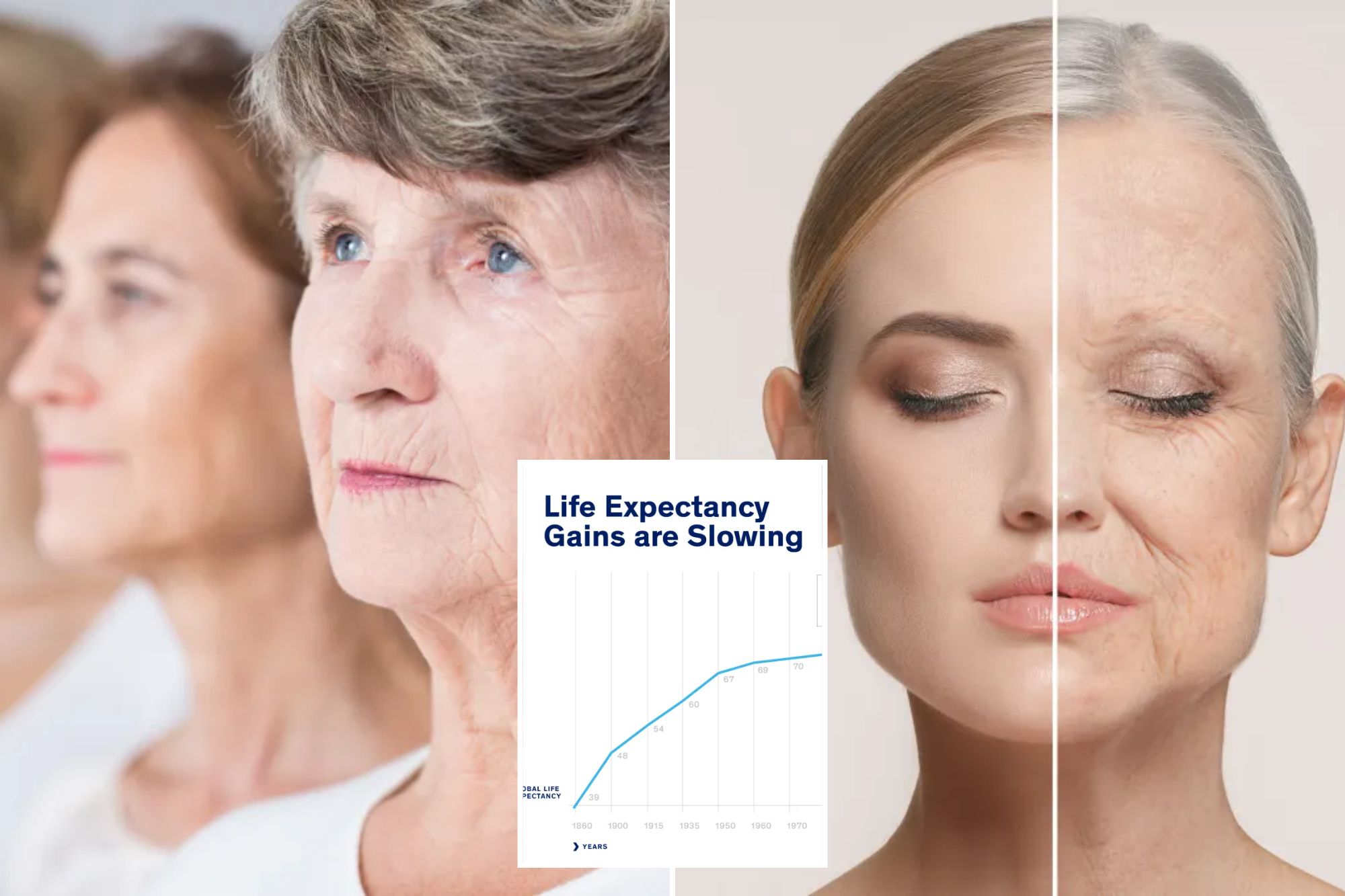
Let’s keep it 100 – your chances of becoming a centenarian are slim.
Medical discoveries, public health breakthroughs and better diets led to sharp increases in global life expectancy in the 1800s and 1900s. But a surprising new study finds that momentum has slowed and the biggest increase in life expectancy may be in the mirror rear.
“The majority of people living into older ages today are living in medically manufactured time,” said study lead author S. Jay Olshansky, a professor of epidemiology and biostatistics at the University of Illinois at Chicago.
“But these medical patches are producing fewer life years even though they are occurring at an accelerated rate, meaning that the period of rapid life expectancy growth is now documented to be over,” Olshansky added.
The analysis, conducted with researchers from the University of Hawaii, Harvard and UCLA, includes data from eight countries with the longest-living populations (Australia, France, Italy, Japan, South Korea, Spain, Sweden and Switzerland), Hong Kong and the US from 1990 to 2019.
Life expectancy at birth in these countries increased by an average of only six and a half years since 1990, according to the study.
“Our result overturns the conventional wisdom that the natural wealth of longevity for our species is somewhere on the horizon ahead of us — a lifespan beyond what we are today,” Olshansky said. “Instead, it’s behind us – somewhere in the 30-60 year range. We have now proven that modern medicine is delivering smaller and smaller improvements in life expectancy even as medical advances are occurring at breakneck speed.”
In the US, life expectancy was 77.5 years in 2022 – a slight increase from 75.4 years in 1990 and a decrease from 78.8 years in 2019.
This new study does not include data from the COVID-19 pandemic, which Olshansky said would have “significantly” drowned out the life expectancy gains recorded from 1990 to 2019.
More than 7 million deaths worldwide have been blamed on the virus.
“We did not want to include the effects of COVID in the estimates because this is a temporary impact on survival and would have made the percentage changes over time heavily influenced by a one-time event,” Olshansky explained to The Post.
Olshansky published a paper in Science in 1990 arguing that it was “highly unlikely” that life expectancy at birth would exceed 85 because the most significant gains had already occurred.
In the new findings, published Monday in Nature Aging, Olshansky said we should focus on slowing aging and extending the health span, the number of years a person is healthy, not just alive.
“This is a glass ceiling, not a brick wall,” he said. “There is a lot of room for improvement: for reducing risk factors, working to eliminate inequalities and encouraging people to adopt healthier lifestyles – all of which can enable people to live longer and healthier.”
Dr. Maria Torroella Carney, a professor of medicine and chief of geriatric medicine and palliative care at Northwell Health, also believes the focus should be on improving and maximizing health at the cellular and physiological levels from an early age.
“Our organ systems (liver, kidneys, lungs, heart, nerve function) peak in function around age 30 and decline over time,” said Carney, who co-wrote “The Aging Revolution” and was not included in the last search. Post. “We are just learning about the cellular and physiological changes that contribute to this decline, such as inflammation, injury, poor diet and lifestyle that can accelerate aging.”
In the US, the oldest living person is Elizabeth Francis, a resident of Houston, who turned 115 in July.
The Pew Research Center reported that the number of Americans reaching age 100 or older is expected to increase from about 101,000 people in 2024 — 0.03% of the population — to about 422,000 in 2054, about 0.1% of the population.
Olshansky said those 100-year-old cases will remain outliers that won’t significantly increase life expectancy.
“It would be optimistic if 15% of women and 5% of men in each human birth cohort could live to age 100 in most countries this century,” his report said.
How to increase your life expectancy
Olshansky shared some tips with The Post on how to age better:
- Avoid life-shortening behavioral risk factors such as smoking, obesity, drugs, a sedentary lifestyle and a poor diet.
- Listen to your doctors and take medications to treat the disease.
- Consider this – how healthy you are in younger and middle ages predicts how healthy you are likely to be in older ages.
- Exercise and diet work effectively not only to ward off disease, but to improve quality of life at all ages.
- One of the most powerful predictors of health and longevity is educational attainment.
#Life #expectancy #gains #waned #medical #advances
Image Source : nypost.com